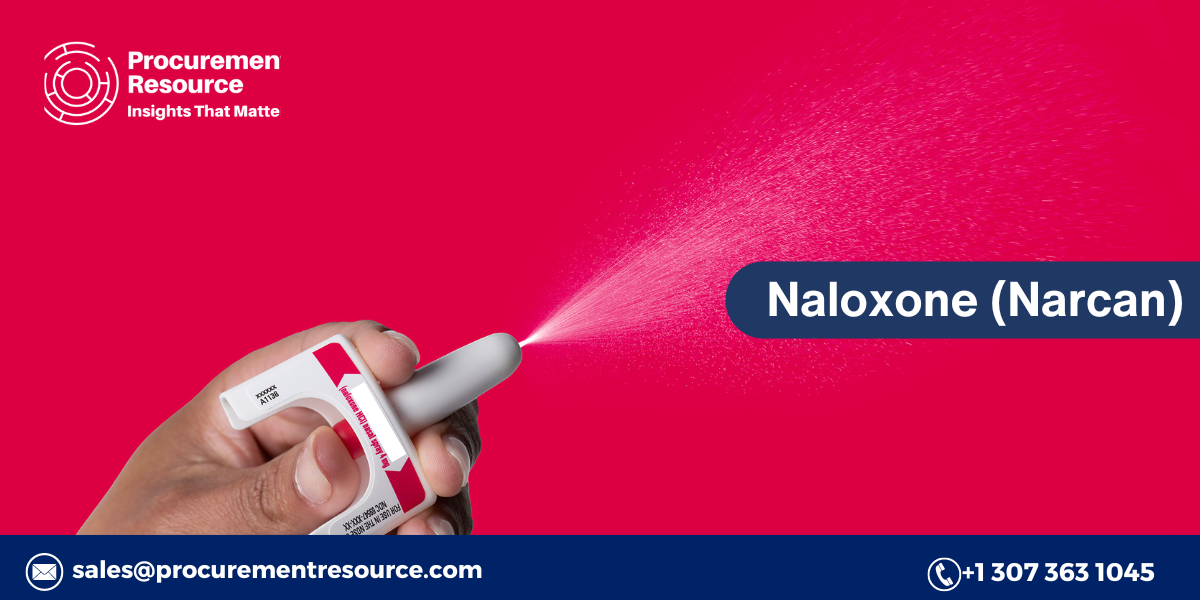
Naloxone (Narcan) Production Cost
Naloxone, often marketed under the brand name Narcan, is a life-saving medication used to rapidly reverse opioid overdoses. As opioid addiction and overdose rates have surged worldwide, the demand for naloxone has grown considerably. Understanding the production costs associated with naloxone is essential as policymakers, healthcare providers, and manufacturers work to make this drug accessible to all who need it. This article examines the factors influencing naloxone (narcan) production cost, the manufacturing process, and the challenges associated with its widespread availability.
1. What is Naloxone?
Naloxone is a medication that blocks opioid receptors in the brain, temporarily reversing the effects of opioid overdose. It can be administered via injection or as a nasal spray. When administered in time, naloxone can restore normal breathing in a person who has overdosed on opioids, potentially saving their life. The medication works by binding to opioid receptors more strongly than opioids like heroin or fentanyl, which displaces these opioids and blocks their effects. Because naloxone has a shorter half-life than many opioids, repeat doses may sometimes be necessary until the opioids are fully metabolized. Request For Free Sample: https://www.procurementresource.com/production-cost-report-store/naloxone/request-sample2. The Naloxone Production Process
The production of naloxone involves several key steps, which include sourcing raw materials, synthesis, formulation, and packaging. Here’s a closer look at each stage:2.1 Sourcing Raw Materials
Naloxone is synthesized from a combination of specific chemicals, including the opiate thebaine, which is a derivative of the poppy plant. This creates a partially synthetic compound that can be modified for use as a reversal agent. The availability and cost of raw materials directly influence the overall production cost of naloxone.2.2 Chemical Synthesis
Thebaine undergoes a series of chemical reactions to produce naloxone hydrochloride, the active pharmaceutical ingredient (API) in naloxone. The synthesis involves several steps, including:- Extraction of Thebaine: Thebaine is extracted from opium poppies and modified through a sequence of chemical reactions.
- Formation of Naloxone Hydrochloride: Further processing converts the thebaine derivative into naloxone hydrochloride, which is then purified and tested for quality.
2.3 Formulation
Once the naloxone hydrochloride is synthesized, it is formulated into a product that can be administered either via injection or as a nasal spray. The formulation process includes mixing the naloxone with excipients (inactive ingredients) that stabilize the drug and make it suitable for the chosen delivery method.2.4 Packaging and Distribution
After formulation, the naloxone product is filled into individual dose containers, such as pre-filled syringes or nasal spray applicators. The packaging phase includes sterilization, sealing, labeling, and final packaging into boxes for distribution. Given the urgent nature of naloxone, manufacturers must ensure rigorous quality control standards are met at every stage.3. Key Factors Influencing Naloxone Production Costs
Several elements impact the production costs associated with naloxone, from the sourcing of raw materials to regulatory compliance. Understanding these factors helps to shed light on the overall pricing of naloxone in the market.3.1 Raw Material Costs
As a medication derived from the opium poppy, the cost of naloxone is partly dependent on the availability and price of thebaine. The cost of thebaine fluctuates based on factors such as:- Poppy Crop Yields: The success of poppy cultivation in key regions affects the availability and price of thebaine.
- Global Trade Policies: Tariffs, import/export regulations, and trade agreements can impact the supply chain for thebaine and other essential chemicals.
- Market Demand: The increasing demand for opioid antagonists has put pressure on the supply of raw materials, leading to price fluctuations.
3.2 Manufacturing and Labor Costs
Producing naloxone involves skilled labor and specialized equipment for the chemical synthesis, formulation, and packaging stages. Key considerations in this category include:- Labor Costs: Skilled chemists, engineers, and technicians are required to operate sophisticated manufacturing processes. Labor costs can vary based on the region where the production facility is located.
- Energy Costs: The chemical synthesis of naloxone hydrochloride is energy-intensive, requiring a consistent energy supply to run machinery and maintain environmental controls within production facilities.
- Facility Maintenance and Equipment: Routine maintenance of production equipment is essential to ensure consistent quality and output. These maintenance and depreciation costs also factor into overall production expenses.
3.3 Quality Control and Regulatory Compliance
Naloxone, as a pharmaceutical product, is subject to stringent quality control and regulatory standards. Compliance with these standards incurs additional costs:- Testing and Quality Assurance: Each batch of naloxone undergoes extensive testing to confirm purity, potency, and safety. Quality assurance procedures ensure that the final product meets FDA and other regulatory requirements.
- Good Manufacturing Practices (GMP): Pharmaceutical manufacturers must adhere to GMP standards, which involve facility inspections, thorough documentation, and regular audits. Compliance with these practices contributes to the overall cost.
- Regulatory Fees: Naloxone manufacturers must comply with local, national, and international regulatory bodies, each of which may impose licensing fees, filing costs, and certification expenses.
3.4 Research and Development (R&D)
Manufacturers invest in R&D to improve naloxone formulations, develop more user-friendly delivery methods, and enhance efficacy. While initial R&D costs are substantial, ongoing improvements and advancements can reduce long-term costs by streamlining production and making the drug more accessible.3.5 Packaging, Marketing, and Distribution
As a critical medication, naloxone’s packaging and distribution must meet high standards to ensure it remains effective. Cost factors include:- Packaging Materials: Single-use syringes and nasal spray containers must be manufactured to ensure durability and sterility, which incurs material costs.
- Marketing and Awareness Campaigns: Manufacturers may engage in campaigns to increase awareness of naloxone’s availability. These campaigns often include training programs for medical professionals, first responders, and community organizations.
- Distribution Logistics: Distribution costs depend on the scale of production and the regions served. Efficient distribution channels and partnerships can help reduce costs.






